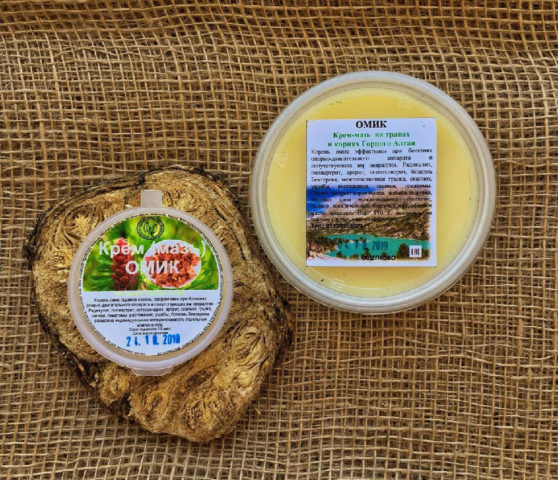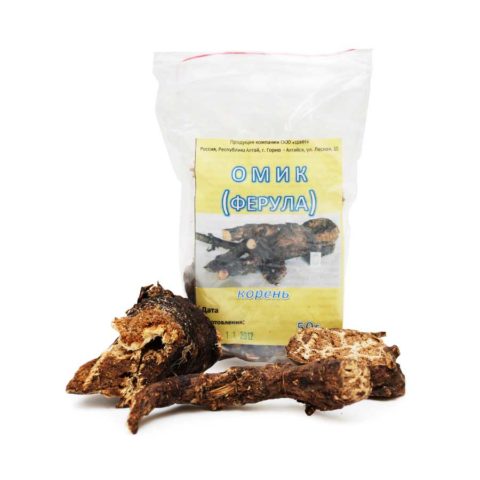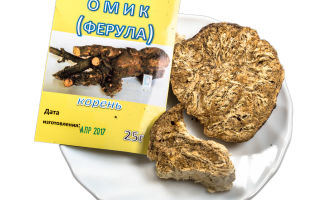Content
The healing properties of Dzhungarian ferula are actively used by fans of traditional methods of treatment. The plant is also known as omik. It is recommended as a therapeutic agent for infectious diseases, nervous disorders, and inflammatory lesions of the digestive system. The first mentions of its use date back to the 8th-6th centuries. BC e. In Russia, ferula was the most popular in the 17th-18th centuries, but it is still used for treatment today.
What types of ferula are beneficial
Ferula is a perennial herb of the Umbrella family. Its name comes from the Latin word ferula, which means "rod", "twig", "vine". The Ferula genus has more than 170 species. Some botanists claim more than 200 of them.
Not all ferula varieties are created equal. The most valuable are:
- Dzungarian;
- smelly;
- Zailiyskaya;
- gummy;
- finely dissected;
- musky;
- peristonergic.
The composition of many species has not yet been studied, so it is not known how they act on the body. According to traditional healers, gum is useful. Therefore, internally and externally, it is recommended to use those types of omics, from which galban is obtained - a fragrant resin.
Chemical composition
When studying the composition of the Dzungarian ferula, it was revealed that it contains more than 120 elements. It includes:
- essential oils in which sulfur compounds are present;
- organic sulfides;
- resins containing up to 60% ferulic acid;
- coumarin scopoletin;
- vitamins;
- minerals;
- carotenoids;
- organic acids, including linoleic, oxalic, oleic, formic, palmitic, brinolic.
The plant is a source of alkaloids, terpenes, glycosides and other substances that are distinguished by high biological activity. All the components that make up the Dzungarian ferula, even in small quantities, have a positive effect on the body.

Why is ferula useful?
The healing properties of the ferula plant are due to the influence of all the substances that make up the composition. When the root is taken internally, the following effect on the health of patients is observed:
- normalization of metabolic processes;
- strengthening the heart;
- cleansing blood vessels from cholesterol, improving the condition of their walls;
- removal of slags, salts of heavy metals, toxins;
- lowering blood glucose levels;
- stimulation of natural defenses.
The popularity of the root is due to the fact that with the regular use of funds based on it, the following types of action on the body are observed:
- pain reliever;
- anti-inflammatory;
- bactericidal;
- antiparasitic;
- choleretic;
- diuretic;
- anticonvulsant;
- antineoplastic.
Folk remedies made on the basis of omic, prevent the formation of stones in the gall and bladder.
Prescribe a remedy to patients who have:
- disorders of the digestive tract, dyspeptic disorders, including those cases when they are caused by the appearance of malignant and benign neoplasms;
- eczema, psoriasis, atopic dermatitis and other dermatological problems;
- nervous disorders;
- diabetes;
- diseases of the cardiovascular system;
- problems with the musculoskeletal system, accompanied by pain - sciatica, gout, arthritis, etc.;
- infectious diseases, including syphilis;
- bronchial asthma, COPD, pulmonary tuberculosis;
- disruption of the liver, spleen, kidneys;
- gynecological pathologies, including mastopathy;
- eye diseases;
- cancer of the stomach, liver, spleen, kidneys, mammary glands, blood;
- weakened libido.
External use is indicated for varicose veins. At the same time, you can use infusions inside, so it will be possible to achieve a complex effect on the vessels. Compresses are also recommended for people who have a large number of spider veins and hematomas of various origins.
Why is ferula tincture useful?
Omic tincture is used both internally and as an external agent. Most often, the beneficial properties of the Dzungarian ferula root are used in the treatment of tumor diseases. For these purposes, water and alcohol tinctures are used. They are recommended not only for benign, but also for malignant tumors.

As part of complex therapy, tincture of the Dzungarian ferula is recommended for lesions of the musculoskeletal system, which are accompanied by neuralgia. It should be used internally and externally. Most often, combined use is prescribed for:
- radiculitis;
- arthritis;
- osteochondrosis;
- polyarthritis;
- gout;
- ankylosing spondylitis;
- scoliosis;
- intervertebral hernia.
The list of indications for the use of Omik as an internal and external agent also includes dermatological diseases. The complex use of the product allows you to heal the body and eliminate the external manifestations of diseases.
Preparation and application methods
The medicinal properties of the Ferula Dzungarian plant depend on the recipe for the healing agent. For many diseases, alcohol tincture is recommended. But broth and water infusion are no less useful. For external use, compresses from a decoction, an omik infusion, an ointment prepared on the basis of a plant are used.
Tincture
Alcohol tincture is prepared on the basis of the roots of the Dzungarian ferula. To do it, you need to take 3-4 tbsp. l. crushed raw materials and pour it with 0.5 liters of vodka. It is necessary to insist the product in a glass container in a dark place. It will be ready for use after 10-14 days. After the specified period has passed, the liquid should be filtered.
Healers recommend taking alcohol tincture on an empty stomach according to a special scheme twice a day. In the first dose you need to drink one drop, in the second - two. They are diluted in 100 ml of water. The dosage is increased until it reaches 20 drops. In the specified amount, the tincture must be taken for a month.
It is undesirable to abruptly cancel the use of the medicine. Every day you need to reduce the number of drops by one.
Alcohol tincture can be used externally. To do this, 10-15 drops of the product are rubbed into painful areas. Before this procedure, they need to be slightly warmed up with massage or rubbing. The effect will be more noticeable if the pores are opened first. This will allow the medicine to penetrate faster.
In case of benign and malignant tumors of the gastrointestinal tract, it is recommended to make a tincture from 60 g of resin powder of the Dzungarian ferula root and 1 liter of vodka. Cook it in a dark place for 2 weeks. Before taking the liquid, you need to strain, and squeeze the remaining cake.

An aqueous infusion of Dzungarian ferula is prepared from 5 g of dry raw materials and 500 ml of water. Crushed omik root is poured with boiling water in a thermos. The infusion is prepared for 30 minutes. You need to drink it twice a day on an empty stomach, 250 ml.
Decoction
For diseases of the digestive system, musculoskeletal system, nervous disorders, it is recommended to take a decoction of Dzhungarian ferula. For cooking, you will need 10 g of omik and 300 ml of water. Chopped raw materials should be poured into a saucepan with boiling water and boiled for 20 minutes under a lid over low heat. It is better to use enameled dishes for these purposes.
Take a warm broth should be 1 tbsp. l. at night. The course of treatment lasts 9-10 days.
Ointment
For external use, an ointment is used, prepared on the basis of Dzungarian ferula. It is prepared from powdered root resin and lanolin. The product moisturizes the skin well and reduces the severity of pain. They can rub the back, problem joints several times a day.
They also make an anesthetic ointment from omik extract, beeswax and propolis. When preparing and using the product from Dzungarian ferula according to this recipe, all its healing properties are revealed. In combination with the components of propolis, beeswax, the active substances of Omik are more effective. They help to reduce pain caused by osteochondrosis, radiculitis without the use of drugs. Also, when using it, edema and joint crunch disappear.
At home, you can make an ointment from 1 tbsp. l. omic root powder, 3 tbsp. l. honey and 7 tbsp. l. table vinegar. This remedy should be insisted for two weeks, shaking occasionally.

Instructions for use
Before using omics-based tools, you need to figure out who can use it and according to what schemes. Only after evaluating the action of the ferula herb and its healing properties, you can start therapy. It is advisable to consult a doctor before starting treatment. Do not forget that ferula is a slightly poisonous plant.
For adults
Adults, in the absence of contraindications, can take alcohol, water tincture or decoction. The treatment regimen depends on the diagnosis, the agent chosen and the patient's health condition. The course of therapy can last from a week to several months.
For children
Children under the age of 13 are not allowed to take funds based on the Dzungarian ferula. This is a slightly poisonous plant that can have a toxic effect on the developing organism. If necessary, children can only use external agents.
Contraindications to the use of Dzhungarian ferula
You should evaluate the benefits and harms of omik before you start taking tinctures or decoctions made on its basis. It is possible to prevent the development of negative consequences of admission if you refuse to use the funds:
- with urticaria;
- when a rash of unknown origin appears;
- during illnesses accompanied by high fever;
- with individual intolerance.
Collection and procurement
When planning to collect the extract of the roots of the Dzungarian ferula, you need to prepare.The procedure is carried out in several stages:
- in April, a suitable plant should be dug in so as to expose the surface of the underground part, clean it of leaves, stones and sprinkle it with loose soil;
- in May, the root should be exposed again, and then the upper part of the plant should be cut off under the leaf growth line;
- at the site of the cut of the Dzungarian ferula, juice is released, which hardens and turns into latex, after which the plant is covered to protect it from the sun, dirt and dust;
- after two days, collect the latex and make an incision in the rhizome for the appearance of juice;
- after five days, the procedure is repeated;
- ten days later, the juice that has emerged is collected and the underground part is cut again.
You can make cuts on the rhizome until the juice ceases to stand out from it. One plant can produce up to 1.5 kg of latex. It must be dried, the resulting resin should be stored in sealed containers. It must be used within a year.

Conclusion
The healing properties of Dzungarian ferula were known to ancient doctors, but this plant is no less popular today. Infusions, decoctions, ointments made from omik are used as antineoplastic, bactericidal, anti-inflammatory, and analgesic agents. But this is not a complete list of useful properties of the Dzungarian ferula.

